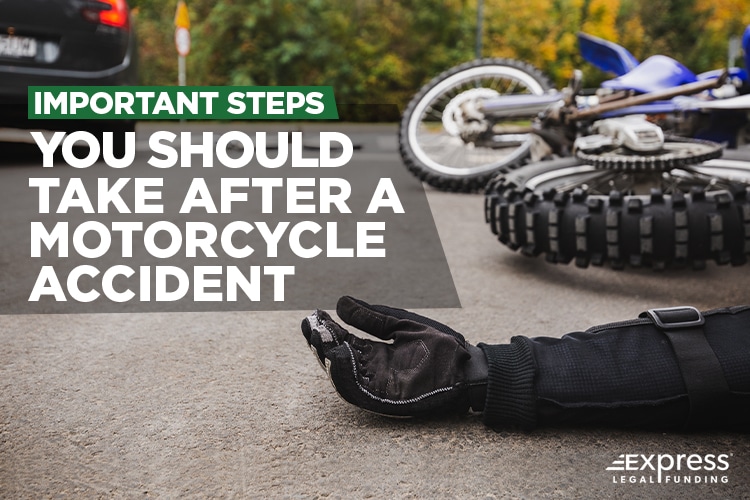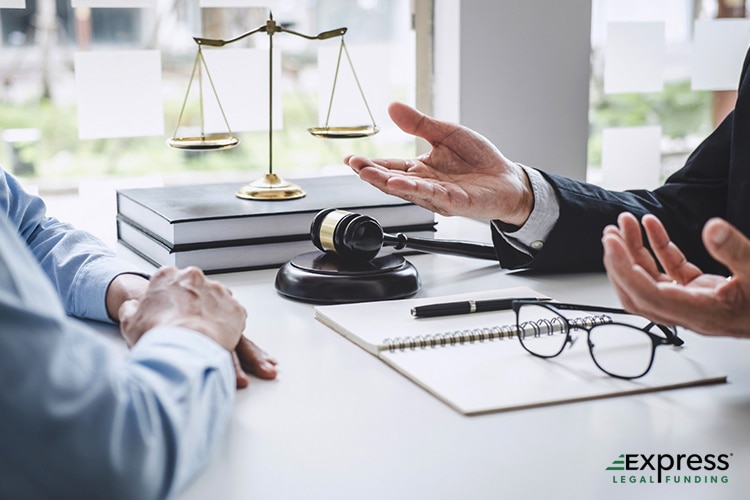
Motor vehicle accidents are terrifying and painful experiences that can throw anyone for a loop. These accidents are often more brutal and debilitating when on a vehicle with minimal physical protection, like a motorcycle.
Unlike a car, a motorcycle leaves your entire body exposed with nothing standing between you and another vehicle or the rough asphalt aside from your protective gear. So, when you are involved in a collision while driving a motorcycle, you are incredibly vulnerable.
If you have been in an accident while driving your motorcycle, you should take several measures in the aftermath.
This article aims to enlighten you on what important steps you should take after being in a motorcycle accident and optimize your chances of recovery and fair compensation for your injuries and damages.
Exhibit A: Seek Medical Treatment
If you have been involved in a motorcycle accident of any kind, you most likely did not walk away unscathed. The sad reality is that even with a helmet, you are remarkably unprotected driving a motorcycle instead of a car.
In fact, in 2019, there were 84,000 injuries on motorcycles out of the 8,596,314 registered motorcycles in the United States of America alone. In 2017, 1,872 motorcyclists fell short of perishing due solely to their helmets.
Motorcycling is a hazardous form of transportation. So, when you are involved in a motor vehicle accident while driving one, you will likely have suffered serious injuries.
To that end, the first critical step is to ensure someone at the scene calls emergency services and requests an ambulance. That way, the EMTs can treat you for any initial trauma you may have sustained in the motorcycle accident.
If you were fortunate enough to walk away from the accident, it is vital you immediately seek out medical attention from the nearest hospital or emergency room, depending on the severity of your injuries.
Through this initial visit to medical professionals, the extent of your injuries can be determined, with an in-depth analysis of the injuries conducted by medical care specialists later on.

If there were no other vehicles involved in your motorcycle accident and your injuries appear superficial, it can make sense to go to an urgent care clinic instead of a traditional emergency room.
Urgent care clinics can treat most non-catastrophic injuries, including bad sprains and lacerations requiring stitches.
The main reasons you would choose an urgent care clinic over a hospital emergency room are that they typically have lower health insurance copays and shorter wait times. Still, you need to listen to your body and not let cost alone dictate the treatment you receive in the hours following an accident.
These evaluations of your injuries not only help to determine how severe your injuries are but also serve as the starting point to determine what kind of treatment you should pursue going forward.
For example, when dealing with motor vehicle accidents on a motorcycle, several severe injuries usually occur, such as spinal cord injuries, traumatic brain injuries, internal bleeding, ligament tears, blunt force trauma, and bone fractures.
These do not encompass all of the potential injuries from motorcycle accidents but are some of the most common.
Each injury type will require some form of treatment from specialists and therapists, which your doctor will likely refer you to following the initial examination of your injuries.
So seeking out and obtaining medical treatment should be your most immediate concern after you leave the scene of the accident.
Exhibit B: Document the Accident
Before leaving the motorcycle accident scene, you or a loved one should contact the police and gather as much documentation as you can.
So it is always a good idea to make an effort to exchange driver’s licenses, insurance information, and contact info of all the drivers involved in your accident.
Plus, getting the license plate numbers of the other motorists involved can often prove helpful. You should use a cell phone to take photos of this information and therefore avoid the risk of writing it down incorrectly.
It’s also a good idea to take photos of the main street and cross streets, as well as the accident scene, including where each damaged vehicle is now located.
After you take the photos, it’s wise to send them via text message to a family member or friend in case you lose your phone before you can back the pictures up later.
Additionally, asking witnesses for their names and phone numbers at the accident scene may also increase your chances of being found not at fault and make those at fault accept liability.
Another part of motor vehicle accidents that is important is the visual evidence you can provide. Following an accident, you should document photographs and videos of the damage to your motorcycle and the other driver’s vehicle to present to your attorney.
Documenting the scale of the damage your vehicle sustained can help put the injuries you took into perspective and serves to help your attorney justify your medical treatment during the negotiations.
It is also used for review by the insurance adjuster to determine if the vehicle is to be considered a total loss or is repairable. The insurance company of the at fault driver is allowed to choose the less expensive option.
Exhibit C: How Did the Accident Occur?
It might seem like most personal injury cases are relatively straightforward, but you should consider several factors before seeking legal action. The first thing to consider is what and who caused the accident.
Many vehicular accidents occur due to road blemishes like potholes, and these issues are traditionally taken care of by cities repaving the asphalt on a regular schedule. Still, driving over a pothole that causes you to veer out of control will rarely result in legal remuneration.
Most single-vehicle accidents have low odds of successfully creating a viable personal injury claim since you would be going up against the local government, which, in all reality, cannot be reasonably held accountable for most accidents of this nature.
You may be able to turn a hazard on the road to a legal claim if the resulting accident was extraordinarily severe or if the city streets were dangerous due to negligence of the highway department or the company that designed the road. These circumstances are generally rare and costly to prove.

However, if the motorcycle crash involved multiple vehicles, you have a more reasonable basis for the claim. If you were struck by (or if you struck) another vehicle due to careless or reckless driving on the other driver’s part, you are more likely to earn remuneration from the claim as a result.
It would help if you could account for the quality and speed of your driving before pursuing any form of legal action.
If the investigation found that your accident resulted from careless driving, it would be exposed one way or the other and risks costing you in the long run.
However, if you are confident the accident was not your fault, you can likely pursue a personal injury case against the other driver for compensation. Even that is not the extent of the factors that affect the nature of the case.
Another thing to determine is whether the other vehicle involved in the collision belongs to the driver or is their employer’s property.
In the latter case, the claim is typically placed on the company that owns the vehicle. The employee that was driving the vehicle will likely be dealt with privately by the company. Commercial vehicles almost always have higher insurance policy limits, and therefore you can recover more money.
Alternatively, suppose you were the one driving the company vehicle, and the accident is your fault. In that case, you may not be able to file for a personal injury claim at all and instead must pursue a worker’s compensation claim through your employer’s internal channels.
Exhibit D: Retain Representation
If you have not done so already, once you have completed most of your medical treatment, to the point where no additional treatment will be of benefit to your body, you should seek out and retain legal counsel to navigate the claim proceedings.
In all likelihood, your case will never see the inside of a courtroom. Instead, it will be negotiated by your personal injury attorney and the claims adjuster for the other driver’s insurance policy. To do that, you will need to provide information to your attorney that can be used to enhance your case value and net you a fair settlement.

The way that many personal injury claims work is that the adjuster for the opposing insurance company puts forth an offer of settlement that they deem sufficient to compensate you for medical expenses, your pain, and your suffering.
If the amount is genuinely fair and will be adequate to cover your medical bills, your attorney costs, and leave a portion for you to take home, then checks are cut, and the injury victim walks away with the amount of money they accepted.
However, if you decide the settlement offer is unacceptable for how you suffered, your attorney can negotiate for a more significant sum.
If the adjuster continues to refuse to offer you a fair settlement amount, the case may be taken to court and presented to a jury who will determine reasonable compensation for your injuries and loss.
In the case of a worker’s compensation claim, your accident is reviewed by your employer, and hiring an attorney is not required but strongly recommended.
Your employer does not pay for damages but instead offers compensation benefits to help pay for medical costs as well as to recover a portion of the wages you lost while recovering.
In either case, when an attorney is retained, they will need the information to present to prove why you require the compensation that you need. Some of this information can be provided by you, while other information might require some inquiry on your attorney’s part.
Exhibit E: Provide Information
There is a lot of information your law firm needs to have to negotiate your case correctly. With this information, they will be able to provide the adjuster, or potentially jury, with the details that will directly impact the size of the settlement you receive.
A comprehensive list of the medical providers you saw for your injuries is the very first thing you should give your attorney. This step is vital for your case since those medical costs do not go away because an accident was not your fault.
However, the list of providers is not enough information on its own and is needed more for the knowledge gained from the providers.

It is from the providers that your attorney will begin requesting copies of your medical records from the accident that detail the types of treatments you were given and if there are any future treatments you will need to consider soon.
They will also request copies of your itemized bills that detail how much each healthcare provider charged. You will sign a medical authorization form your attorney gave you so they can more easily obtain your health records and bills.
When you complete a visit to a medical provider, ask for a copy of your records and your total itemized bill before you leave. This way, when you next see your attorney, you can provide them with copies yourself and save time, effort, and money by having them reach out to the providers themselves.
Exhibit F: The Settlement
Suppose your case was a personal injury claim rather than a worker’s compensation claim. In that case, your settlement will likely be harmonious with the cost of your treatment and any pain, suffering, and damages you incurred as a result.
However, there is no set settlement amount that you can count on receiving after an accident. You might hear stories of huge settlements being doled out when an accident involving commercial vehicles occurs.
Still, the settlement can vary depending on how severely the victim was injured. You’ll also have to prove that the other driver and not yourself caused the accident.

Your settlement amount will prioritize paying your medical bills and contributing to legal fees at the end of the day.
In some states, there are liens from medical providers that allow your attorney to negotiate with the medical providers to lower the treatment’s overall cost to leave more of the remaining settlement funds available to you. Still, even that must remain within reason of what the provider needs to pay off the cost of treating you.
Once the amount is set, and negotiations with medical providers are complete, whatever balance is not used to pay for your medical treatment, the case expenses, and attorney’s fee is given to you to do with as you see fit.
Closing Statements
Motorcycle accidents can be a harrowing experience that can leave you in a critical state. However, if you can walk away from your accident, following these steps will help you get back to a semblance of what your life was like before the accident.
There is no guaranteed outcome for a personal injury claim involving a motorcycle accident, but with a solid enough case, you will still manage to come out ahead in the end.
Even still, these situations can be draining mentally, physically, and financially as your everyday expenses of life do not get put on hold. If you are pursuing a claim following a personal injury case, there is one last step you might want to follow if you need money to pay off your everyday expenses on top of your medical fees.
Legal funding is a type of risk-free financing that can be offered in exchange for a portion of your settlement. The funding does not have to be repaid if your case is not settled or won. At Express Legal Funding, we have made it our mission to educate the consumer and work to provide these funds quickly. So, if you are facing a claim and need legal funding, call us for help today.
